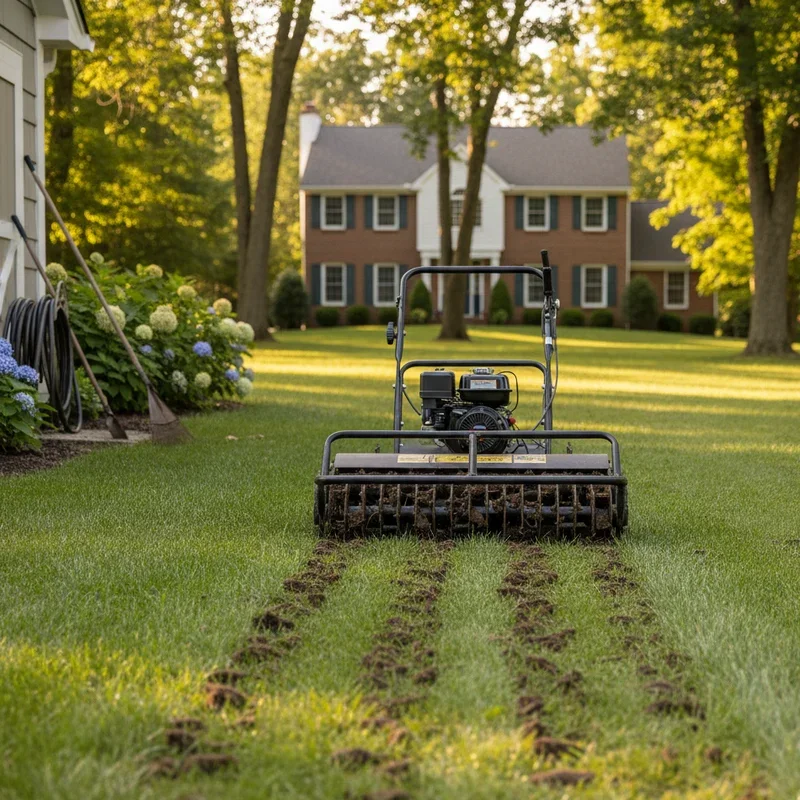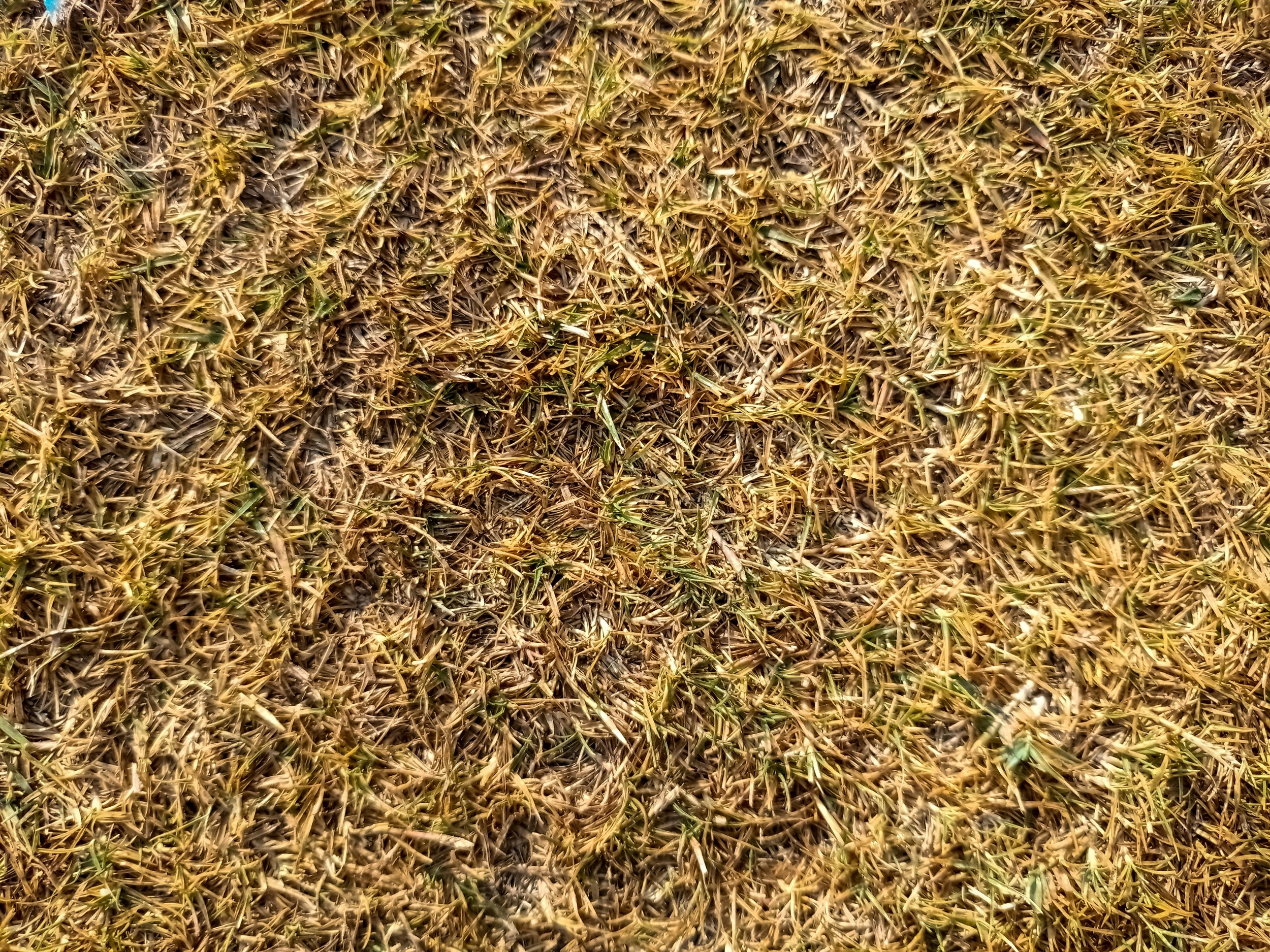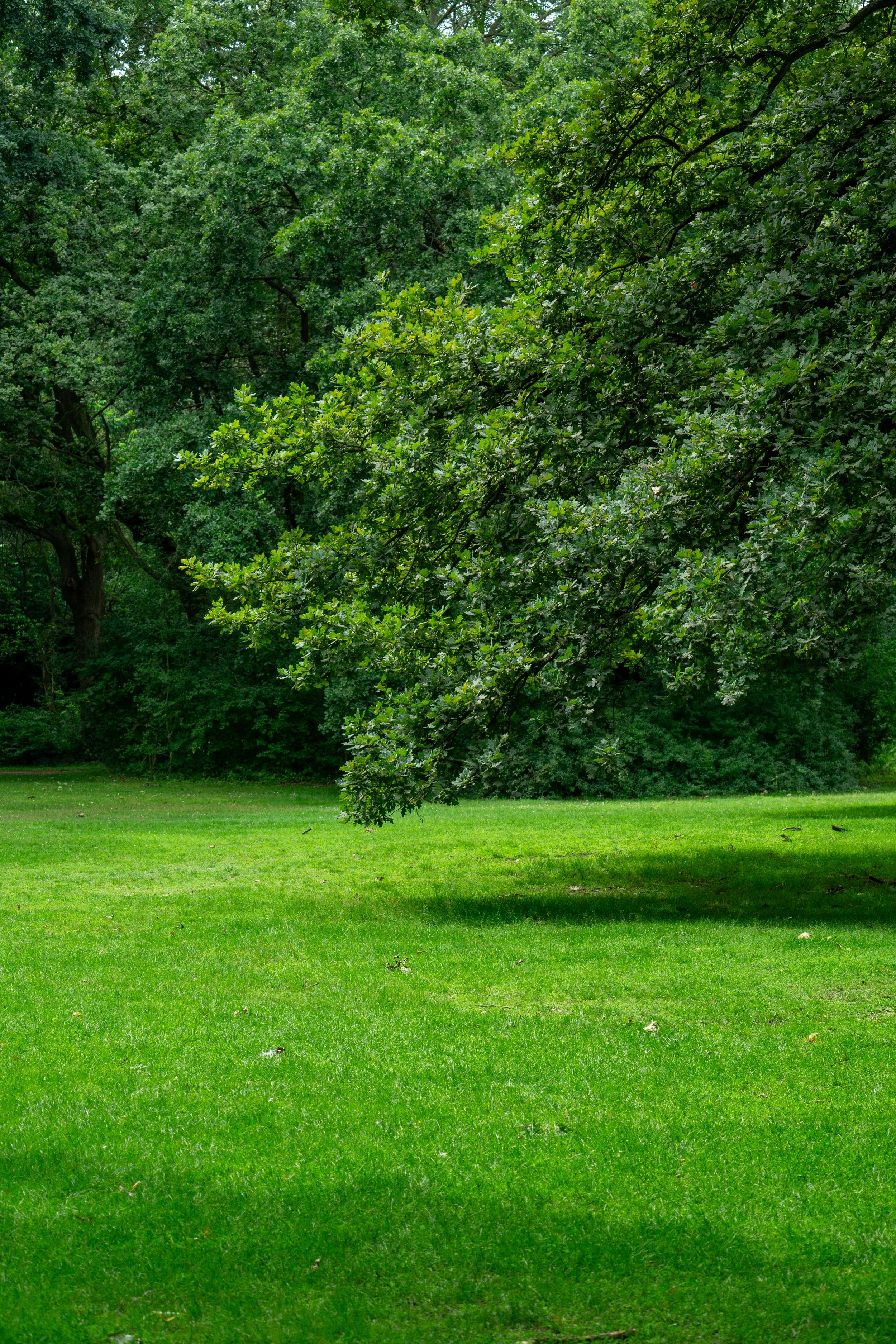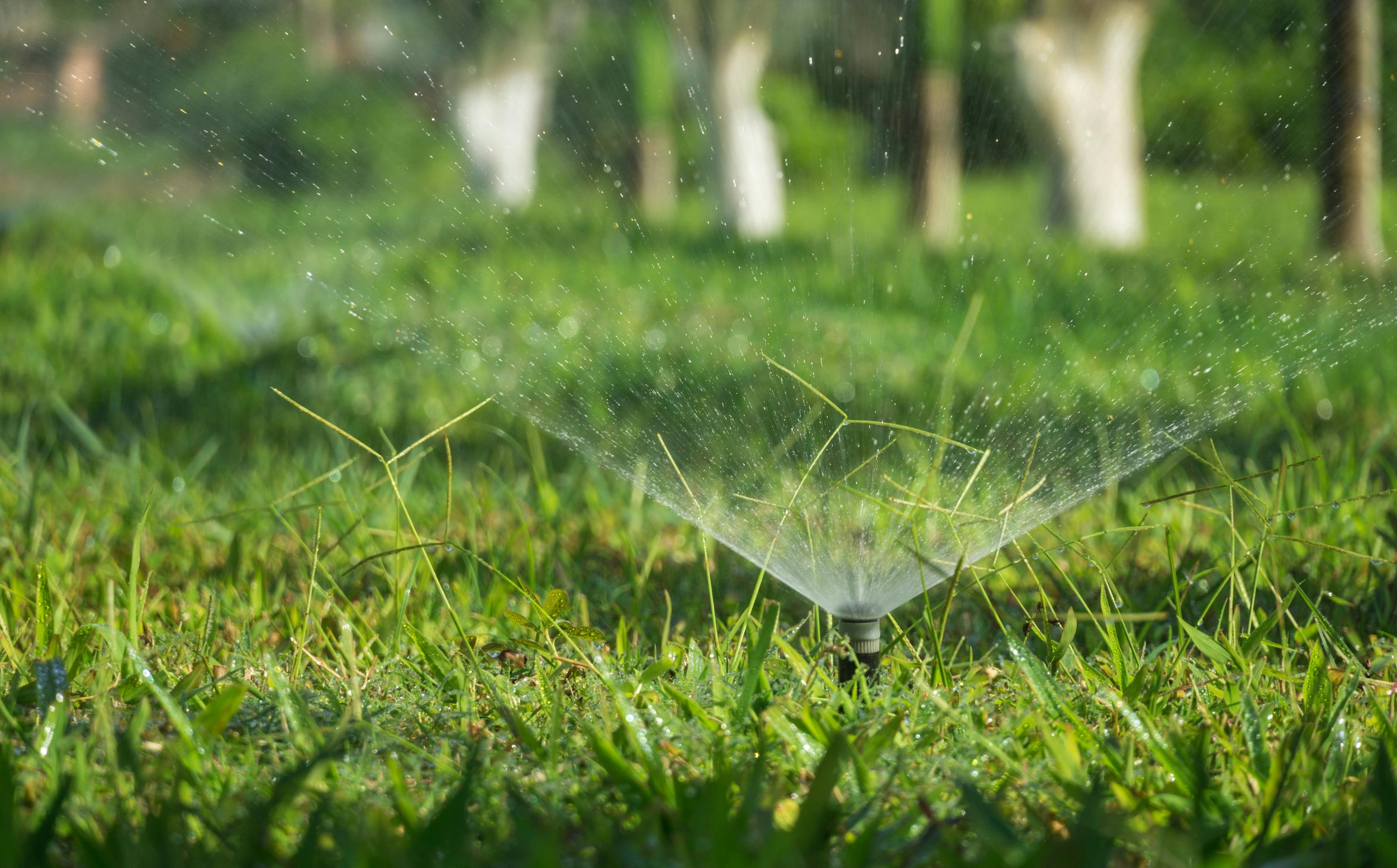What to Do After Aerating Lawn for Best Results
Discover what to do after aerating lawn for best results. Learn essential post-aeration care tips, seeding techniques, and recovery steps for a lush, healthy yard.
So, you've just punched a bunch of holes in your lawn, and now you're wondering what's next? Well, buckle up because the real magic happens after aeration! Getting your timing right with post-aeration care can make the difference between a lawn that's the envy of the neighborhood and one that's, well, let's just say less than stellar.
Think of lawn aeration like opening windows in a stuffy room. Sure, you've let the fresh air in, but if you don't follow up properly, you're basically leaving those windows open during a thunderstorm. The good news? With the right game plan, your grass is about to experience its own little renaissance.
Whether you're a weekend warrior with a rental aerator or you've just had the pros work their magic, understanding what to do after aerating lawn for best results isn't rocket science. It's more like following a recipe where each ingredient matters, but there's still room for a personal touch.
Understanding the Aeration Aftermath
What Actually Happened to Your Lawn?
Picture this: your lawn just went through what's essentially acupuncture for grass. Those soil plugs scattered across your yard? They're not just dirt clumps; they're little treasure troves of nutrients waiting to break down and feed your turf. Your grass might look a bit rough around the edges right now, almost like it needs a good cup of coffee to perk up.
The compacted soil that's been suffocating your grass roots has finally gotten some breathing room. It's kinda like taking off tight shoes after a long day. Your lawn can finally stretch its toes, er, roots! This newfound freedom means water, nutrients, and oxygen can actually reach where they're needed most.
The Critical First 48 Hours
Boy oh boy, these first two days are when your lawn's really vulnerable but also incredibly receptive to TLC. The holes you've created are basically open invitations for everything good (and sometimes bad) to enter your soil. Smart homeowners know this window of opportunity won't stay open forever.
During this period, your grass is working overtime to heal itself. The roots are already starting to explore their new real estate, spreading into those freshly opened channels. Meanwhile, beneficial microorganisms are having a field day, breaking down thatch and organic matter like there's no tomorrow.
Essential Steps for What to Do After Aerating Lawn for Best Results
Leave Those Plugs Alone!
I know, I know. Those soil plugs look messy, and your inner neat freak is probably screaming to rake them up. But here's the thing: leaving them be is like giving your lawn a slow-release vitamin. As they break down over the next week or two, they're returning valuable nutrients and microorganisms right back to your soil.
Walking across your lawn and seeing those plugs might make you feel like you're navigating a minefield, but trust the process. Mother Nature's got this one covered. Rain, foot traffic, and mowing will naturally break them down, creating a beautiful top-dressing effect that your grass will absolutely love.
Overseed Like You Mean It
Now we're talking! Overseeding after aeration is like hitting the jackpot in lawn care. Those holes you've created? They're perfect little nurseries for new grass seeds. The seeds fall into the holes, get great soil contact, and boom! You've got germination conditions that would make any gardener jealous.
Here's your overseeding game plan: • Choose a seed blend that matches your existing grass type • Apply seeds at the recommended rate (don't go overboard thinking more is better) • Use a broadcast spreader for even distribution • Consider using a starter fertilizer specifically designed for new grass • Lightly rake areas where seeds seem sparse • Keep foot traffic to a minimum for the first two weeks
Water Wisely, Not Wildly
Watering after aeration isn't just about turning on the sprinkler and calling it a day. Nope, this requires a bit more finesse. Your lawn's like a patient recovering from surgery; it needs consistent, gentle care rather than overwhelming attention.
For the first week, you'll want to water lightly but frequently. We're talking about keeping the top inch of soil consistently moist, especially if you've overseeded. Think morning dew rather than monsoon! As the grass starts recovering and seeds begin germinating, you can gradually transition to deeper, less frequent watering sessions.
Fertilize for Success
Ah, fertilizing after aeration! It's like serving a gourmet meal to someone who's been living on fast food. Your lawn can actually absorb and use those nutrients now that the soil's not packed tighter than a jar of peanut butter.
The type of fertilizer you choose depends on what your lawn's craving. Did you overseed? Go with a starter fertilizer high in phosphorus. Just maintaining existing grass? A balanced fertilizer works wonders. Fall aeration? Consider a winterizer formula that'll help your grass store energy for spring's big comeback.
Advanced Care Strategies
Topdressing Techniques
Ever heard of giving your lawn a facial? That's basically what topdressing is! Spreading a thin layer of compost or quality topsoil over your aerated lawn fills in low spots, improves soil structure, and adds organic matter that'll make your grass roots dance with joy.
The trick is keeping it light. We're aiming for about a quarter-inch layer, just enough to work into those aeration holes without smothering your existing grass. Use a rake or specialized topdressing brush to work it in gently, making sure you're not creating thick patches that could suffocate your turf.
Dealing with Weeds
Here's where things get a bit tricky. Those aeration holes that are so great for grass seeds? Yeah, weed seeds think they're pretty neat too. But don't panic! You've got options that don't involve declaring chemical warfare on your entire yard.
If you've overseeded, hold off on any weed control products for at least 6-8 weeks. New grass seedlings are delicate little things that won't appreciate herbicides. Instead, focus on promoting thick, healthy grass growth that'll naturally crowd out weeds. Sometimes the best defense really is a good offense!
Adjusting Your Mowing Schedule
Your mower's probably feeling a bit neglected right now, huh? Well, it needs to stay that way for a little while longer. Wait until your grass has recovered and any new seedlings have been mowed at least twice before returning to your regular cutting height.
When you do start mowing again, make sure your blades are sharper than your wit on Monday morning. Dull blades tear grass rather than cutting it cleanly, and your recovering lawn doesn't need that kind of stress. Start with a higher cutting setting and gradually work your way down to your preferred height over several mowings.
Seasonal Considerations for Post-Aeration Care
Spring Aeration Recovery
Spring aeration recovery is like your lawn's morning coffee; it jumpstarts everything for the growing season. The warming soil temperatures and increasing daylight hours mean your grass is already in growth mode. You'll see those aeration holes fill in faster than you can say "green thumb."
Focus on nitrogen-rich fertilizers to promote that lush green growth. Keep an eye on moisture levels since spring showers might do some of the watering work for you. Just don't let Mother Nature completely take the wheel; supplemental watering might still be necessary during dry spells.
Fall Aeration Advantages
Fall aeration? Now you're playing with the pros! Cool-season grasses absolutely love fall aeration because it sets them up for winter survival and spring success. The cooler temperatures mean less stress on your grass, and those autumn leaves breaking down add extra organic matter to your soil.
This is prime time for overseeding cool-season grasses. The soil's still warm enough for germination, but air temperatures are perfect for grass growth without the stress of summer heat. Plus, most summer weeds are calling it quits, giving your new grass less competition.
Troubleshooting Common Post-Aeration Issues
When Things Don't Go as Planned
Sometimes, despite your best efforts, your lawn looks worse before it gets better. Maybe you're seeing more brown patches than expected, or perhaps those new seeds aren't germinating like they should. Don't throw in the towel just yet!
Brown patches might just be dormant grass stressed from the aeration process. Give it time and consistent care. If seeds aren't germinating, check your watering schedule. Too much water can rot seeds, while too little leaves them high and dry. Finding that Goldilocks zone of "just right" takes some practice.
Dealing with Heavy Rain After Aeration
Mother Nature decided to throw a pool party on your newly aerated lawn? Yikes! Heavy rain immediately after aeration can wash away seeds, create puddles in aeration holes, and generally make a mess of your hard work.
If possible, cover overseeded areas with a thin layer of straw or erosion control blankets. Already got standing water? Don't panic. Once it drains, check for seed washout and reseed bare areas. Your aeration holes actually help with drainage, so you might bounce back quicker than expected.
Long-term Maintenance Following Aeration
Building on Your Success
Congratulations! You've navigated the critical post-aeration period. But don't rest on your laurels just yet. What to do after aerating lawn for best results includes thinking long-term. Your lawn's journey to greatness is a marathon, not a sprint.
Create a lawn care calendar that includes regular aeration (once or twice yearly for most lawns), overseeding, fertilization, and proper mowing practices. Consistency is key here. It's like going to the gym; you can't just work out once and expect to look like a fitness model.
Monitoring Recovery Progress
Keep a lawn diary if you're really serious about this. Note when you aerated, what products you used, weather conditions, and how your lawn responded. This information becomes golden when planning future lawn care strategies. You'll start noticing patterns, like how your lawn responds better to fall versus spring aeration.
Take photos every week to track progress. Sometimes daily changes are so subtle you don't notice them, but comparing photos from week one to week four? That's when you'll really see the transformation and feel like a lawn care wizard!
Conclusion
Taking care of your lawn after aeration isn't just about following steps; it's about understanding your grass's needs during recovery. From leaving those soil plugs alone to strategic overseeding and careful watering, each action contributes to your lawn's comeback story. Remember, patience pays off in lawn care, and the lush, healthy turf you'll enjoy makes all this effort worthwhile. Your neighbors will wonder what your secret is!
Read next: How Often Do You Need to Aerate Your Lawn?
Frequently Asked Questions
Q1: How long should I wait before walking on my aerated lawn?
A: Light foot traffic is okay immediately, but avoid heavy use for two weeks.
Q2: Can I aerate my lawn too often during the growing season?
A: Yes, stick to once or twice yearly for most residential lawns typically.
Q3: Should I bag grass clippings after aerating my lawn?
A: No, leave clippings to decompose and return nutrients to your soil naturally.
Q4: What's the best grass seed for overseeding after aeration?
A: Choose seeds matching your existing grass type and specific climate zone requirements.
Q5: How deep should aeration holes be for optimal results?
A: Aim for 2-3 inches deep to effectively relieve soil compaction issues properly.












